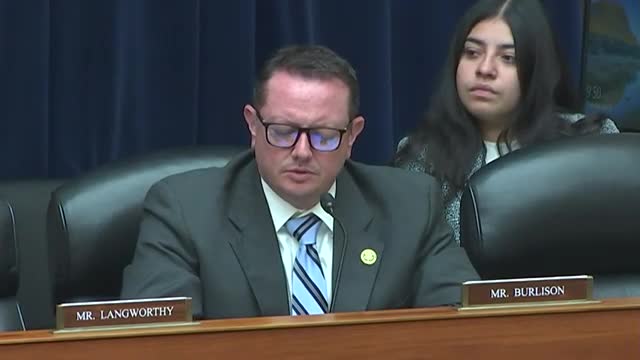Cybersecurity experts demand urgent reforms to incident reporting rules
July 26, 2024 | Oversight and Reform: House Committee, Standing Committees - House & Senate, Congressional Hearings Compilation

This article was created by AI summarizing key points discussed. AI makes mistakes, so for full details and context, please refer to the video of the full meeting. Please report any errors so we can fix them. Report an error »

In a recent government meeting focused on cybersecurity in the healthcare and IT sectors, industry representatives voiced significant concerns regarding the complexities and challenges posed by current regulations. The discussions highlighted the impact of existing laws, particularly around cyber incident reporting, which many believe are not effectively benefiting patient care or the provider experience.
One key point raised was the confusion stemming from multiple regulatory requirements. A representative noted that while Congress had previously passed the Cyber Incident Reporting for Critical Infrastructure Act (CIRCIA) to streamline reporting processes, the reality remains complicated. There are currently 52 different types of incident reporting requirements, leading to a fragmented compliance landscape. Despite efforts to consolidate these regulations, new proposals continue to emerge that diverge from the established guidelines, complicating compliance further.
Another significant issue discussed was the hastily implemented regulations by the Transportation Security Administration (TSA). Industry experts pointed out that initial directives included prescriptive measures that were often impractical for existing technologies and operational environments, particularly in the pipeline sector. These regulations not only posed compliance challenges but also risked impacting the reliability and safety of critical infrastructure.
The meeting underscored the urgent need for a more coherent regulatory framework that aligns with the realities of the healthcare and IT industries. Stakeholders expressed a desire for direct engagement with lawmakers to address these regulatory hurdles and improve the overall cybersecurity posture without compromising patient care or operational efficiency.
One key point raised was the confusion stemming from multiple regulatory requirements. A representative noted that while Congress had previously passed the Cyber Incident Reporting for Critical Infrastructure Act (CIRCIA) to streamline reporting processes, the reality remains complicated. There are currently 52 different types of incident reporting requirements, leading to a fragmented compliance landscape. Despite efforts to consolidate these regulations, new proposals continue to emerge that diverge from the established guidelines, complicating compliance further.
Another significant issue discussed was the hastily implemented regulations by the Transportation Security Administration (TSA). Industry experts pointed out that initial directives included prescriptive measures that were often impractical for existing technologies and operational environments, particularly in the pipeline sector. These regulations not only posed compliance challenges but also risked impacting the reliability and safety of critical infrastructure.
The meeting underscored the urgent need for a more coherent regulatory framework that aligns with the realities of the healthcare and IT industries. Stakeholders expressed a desire for direct engagement with lawmakers to address these regulatory hurdles and improve the overall cybersecurity posture without compromising patient care or operational efficiency.
View full meeting
This article is based on a recent meeting—watch the full video and explore the complete transcript for deeper insights into the discussion.
View full meeting